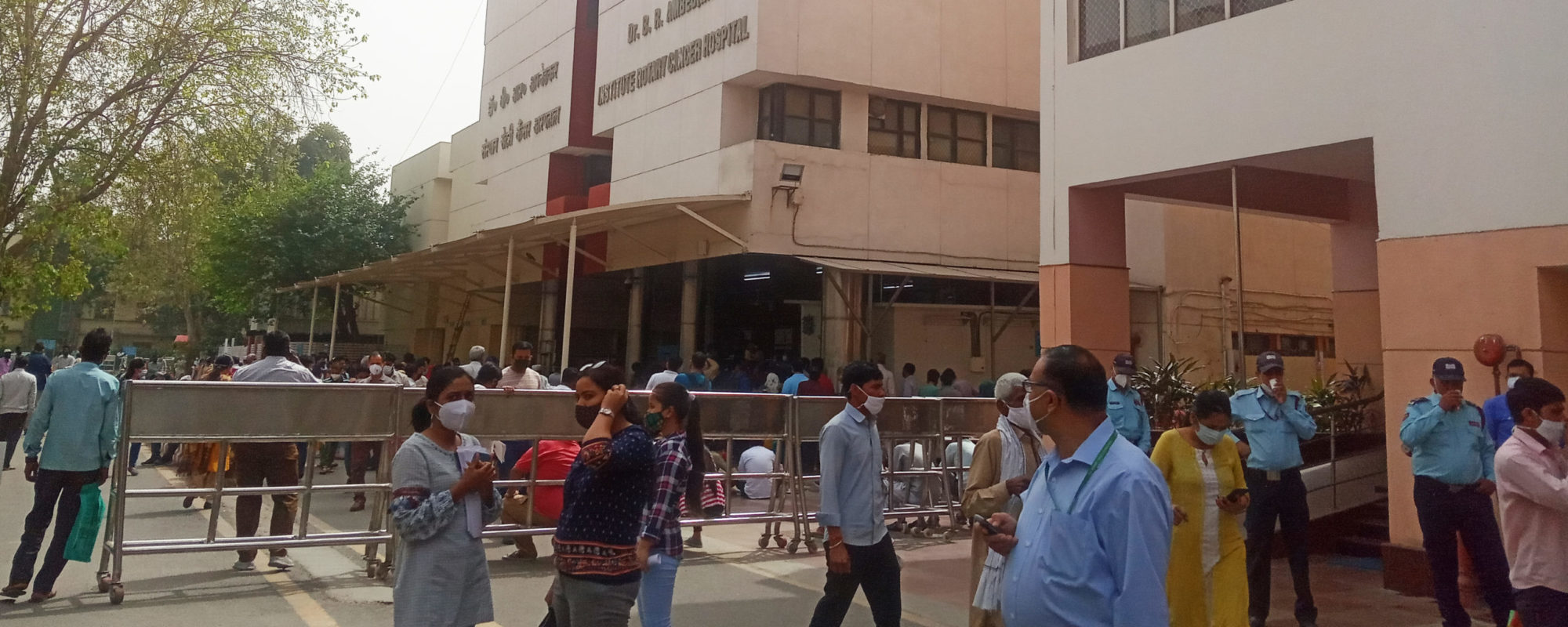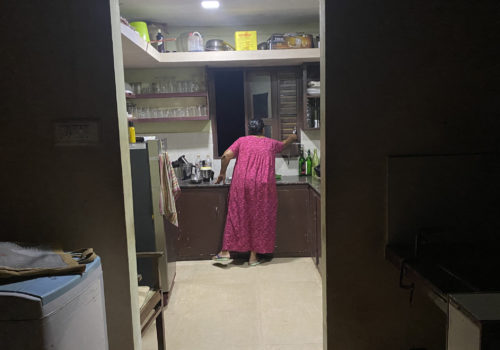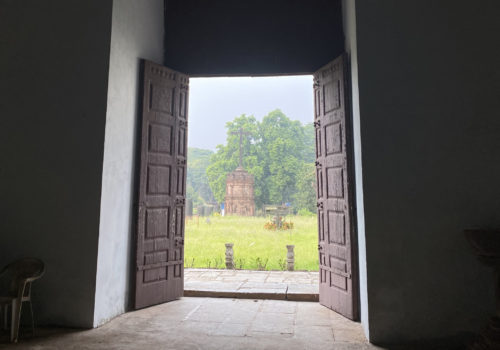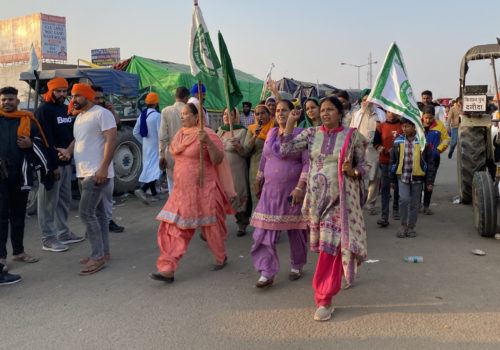DELHI — It’s hard not to feel dread as I scroll through my Twitter feed, now flooded with hundreds of desperate pleas for empty hospital beds and ventilators. They first appeared in late March, when the pandemic’s deadly second wave slowly began in the western state of Maharashtra. By mid-April, the requests multiplied tenfold, including last-ditch attempts by countless people trying to save loved ones. “Need help with procuring Remdesvir for my son Pallava who is Covid +ve and has low O2 saturation,” one tweet read recently. “Desperately looking for an ICU bed for my father. He is COVID +ve . short of breath. Has diabetes and kidneys affected. Needs immediate hospitalisation. Please help!!” read another.
India has become the world’s pandemic epicenter over the past few weeks. The country is now reporting close to 300,000 Covid-19 infections and 2,000 deaths daily, numbers that are climbing at the fastest rate in the world. Feeling they have run out of options to deal with the onslaught, Indians are turning to social media for help. They tweet and retweet requests for vaccine doses, Remdesiver injections, plasma donations, hospital consultations, spare beds in ICU wards, ventilators and, finally, space in overcrowded morgues and crematoriums.
As images of bodies piled up outside hospitals circulate on social media feeds, some are grieving their losses online. A young woman in New York shared devastating screenshots of unanswered WhatsApp messages sent to her mother, who was gasping for breath at the time. She eventually bid her a silent goodbye on Twitter from thousands of miles away. A 65-year-old journalist even live-tweeted his own death after desperately seeking urgent medical care in the northern city of Lucknow. No hospitals, labs or doctors answered his calls; his oxygen levels had dropped to an alarmingly low 52 percent, then 31 percent before he succumbed. His death went viral, but only after his pleas for help were lost in a sea of Covid-19 grief.
As if he were living in a parallel universe, Prime Minister Narendra Modi took to social media to praise the thousands of Indians who attended mass political rallies held by the ruling party in West Bengal ahead of the state’s elections. This month, the Kumbh Mela, a weeks-long Hindu festival, attracted huge crowds of mostly maskless devotees, culminating in what was described as a “super-spreader” event after which over a thousand people tested positive in two days.
Largely left to fend for themselves, the 376 million Indians who use social media platforms are trying to make sense of the public health crisis by way of a massive spike in pandemic-related information online. Twitter—typically used by an elite and more educated middle class—has transformed into a virtual Covid helpline. The volume of demands reflects how even the rich feel utterly helpless.
Twenty-six-year-old Jonita Colaco, an NGO worker from Mumbai and avid social media user, says she feels a personal responsibility to assist others through this crisis by tweeting medical requests every day.
“Twitter is one of the only ways for people to cope with this pandemic and be there for each other,” she said.
She lost her grandfather to the virus last year and says she can’t help but feel angry about the state of affairs as another, much larger Covid wave hits the country. “I am enraged. Why shouldn’t I be?” she said. “When it happens to someone close to you, you know how bad the situation can get.”
The colossal bungling of pandemic management shows the incompetence of the government.
Colaco and others have aggregated lists of Covid-related resources on Twitter in an attempt to plug the gaps in an exhausted healthcare system. Help comes in many forms, from journalists sharing information from trusted sources about new beds to the provision of free daily meals for patients and doctors. At a time when large swaths of the country feel gaslit by the government, such acts of kindness have provided much needed crowd-sourced support.
Shahnawaz Kaloo, a radiologist at Max Hospital in New Delhi, says he feels a sense of urgency to help people. He often fields a dozen messages a day on Twitter from panicked patients, especially those unable to reach a hospital, who describe their symptoms and ask for advice. “Because there’s so much chaos and the patients are in distress, they try whatever they can to get help,” he said.
But Twitter also has adverse effects. Of the thousands of requests posted on Twitter, very few are actually answered, observed one journalist helping such efforts. Unanswered appeals fan a sense of despair among the public. Kaloo says he’s seen people with mild Covid symptoms who could easily recover at home lining up in queues for hospital beds. “People are scared as these stories spread and come into the public consciousness,” he said. “They don’t want to be next.”
Social media is also amplifying fear and misinformation. Even before the country reported its first Covid-19 case last January, feeds were rife with fake posts, rumors, conspiracy theories and doctored videos about the disease’s origin and subsequent spread. Kaloo recalls tweeting to urge his followers not to drink hydroxychloroquine, a suggestion made by former US President Donald Trump.
“In a country with mass illiteracy, it is also easy for people to fall prey to forwarding misinformation,” said Niranjan Sahoo, an expert in governance and politics at the Observer Research Foundation, an Indian think-tank.
One way to try to remain calm during this time, Kaloo says, is by recognizing that India is not a homogenous country. While major metropolitan cities like Delhi and Mumbai have seen unprecedented spikes in cases, there are still pockets, especially in the northeast and far south, that are doing relatively better. Although the overall situation is dire, he said, “treating the country as a single unit for this virus is probably not the best thing to do.”
Matters looked far better even a few weeks ago. India had one of the world’s biggest vaccination rollouts by April, with more than 3 million doses administered per day, more than the United States and European Union. More than 100 million people have received at least one dose so far. But those numbers still account for less than 10 percent of Indians at a time when vaccination efforts have been scaled back due to shortages. Although India gave emergency approval for foreign vaccines just days ago, from May, it will open the vaccine drive to everyone over the age of 18, leading critics to ask whether there will be enough supply. The virus has also spread differently in the second wave, putting more younger people at risk and expanding much faster than before. The government had failed to invest enough in research to understand variants early, downplaying their effects to avoid panic.
“It’s a colossal bungling of pandemic management that shows the incompetence of the government,” said Sahoo, the governance expert.
Even a federal minister in the northern state of Uttar Pradesh turned to Twitter to find a hospital for his ailing brother. “My brother needs a bed for corona treatment. Now beds are not available in Ghaziabad,” Vijay Kumar Singh tweeted. He later deleted his tweet, saying he had written on behalf of someone else.
Photo: Dr. Bra Institute-Rotary Cancer Hospital and Cardio Neuro Tower in Delhi, March 16, 2021 (Sumita Roy Dutta, Wikimedia Commons)




